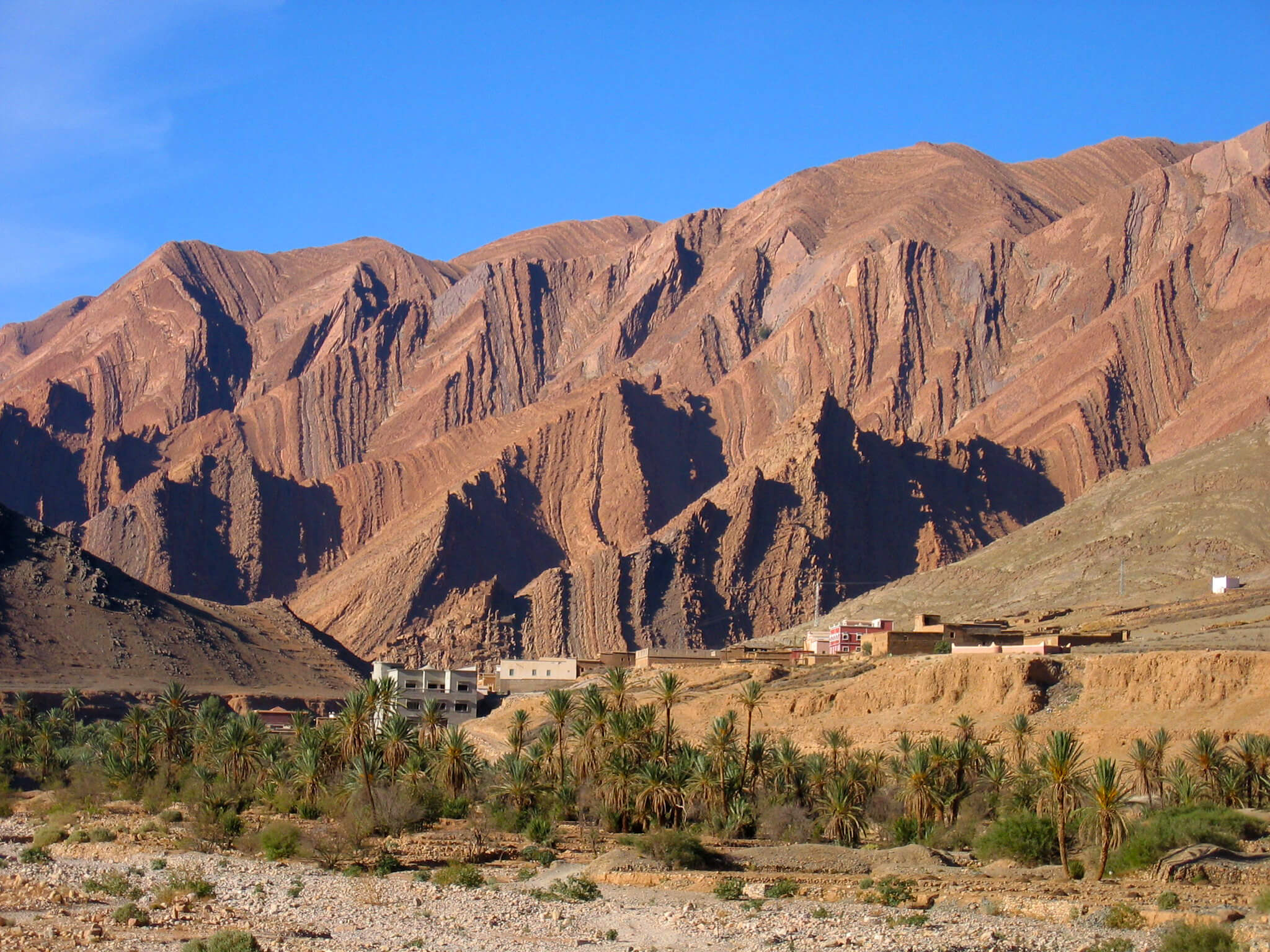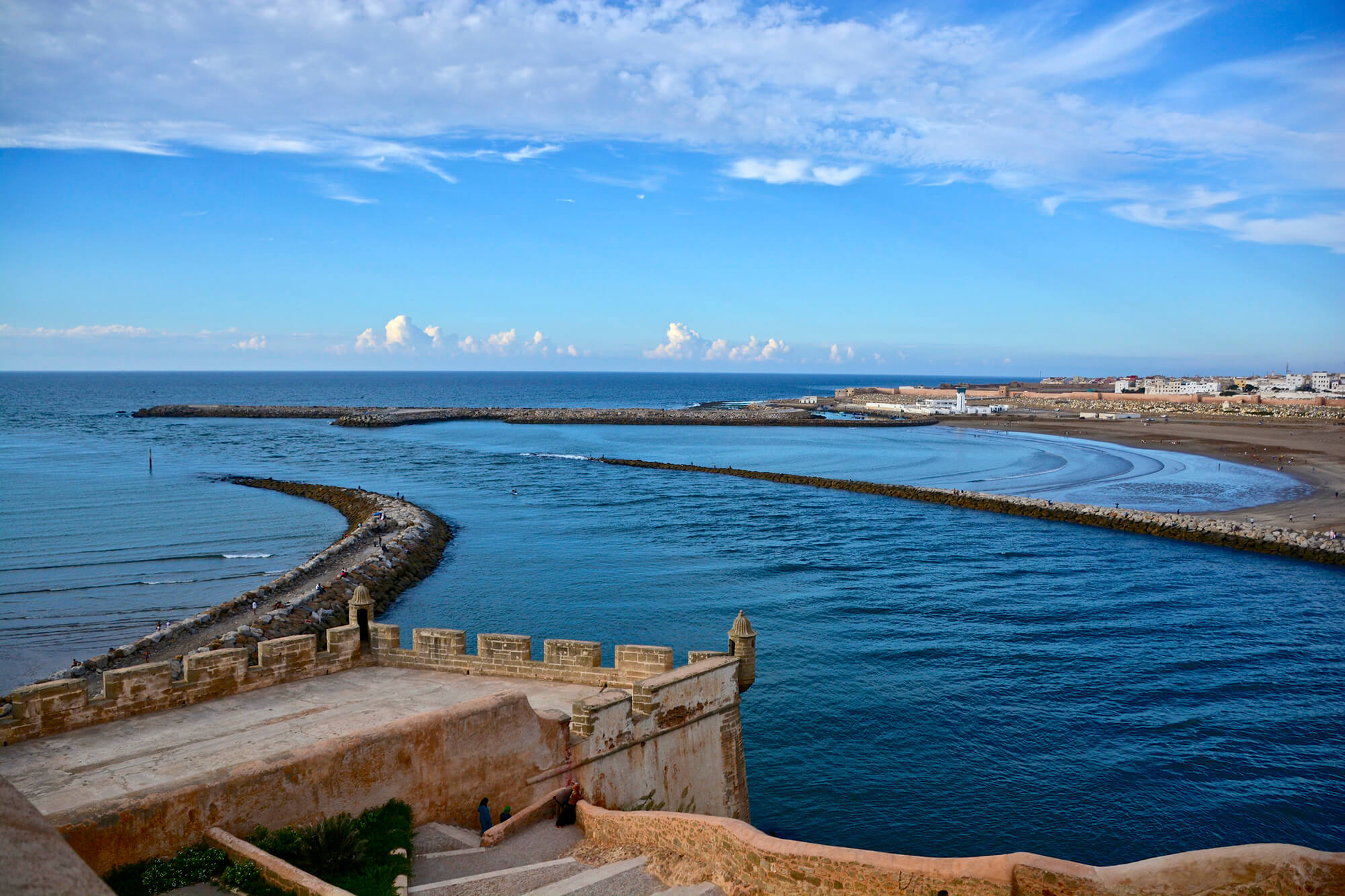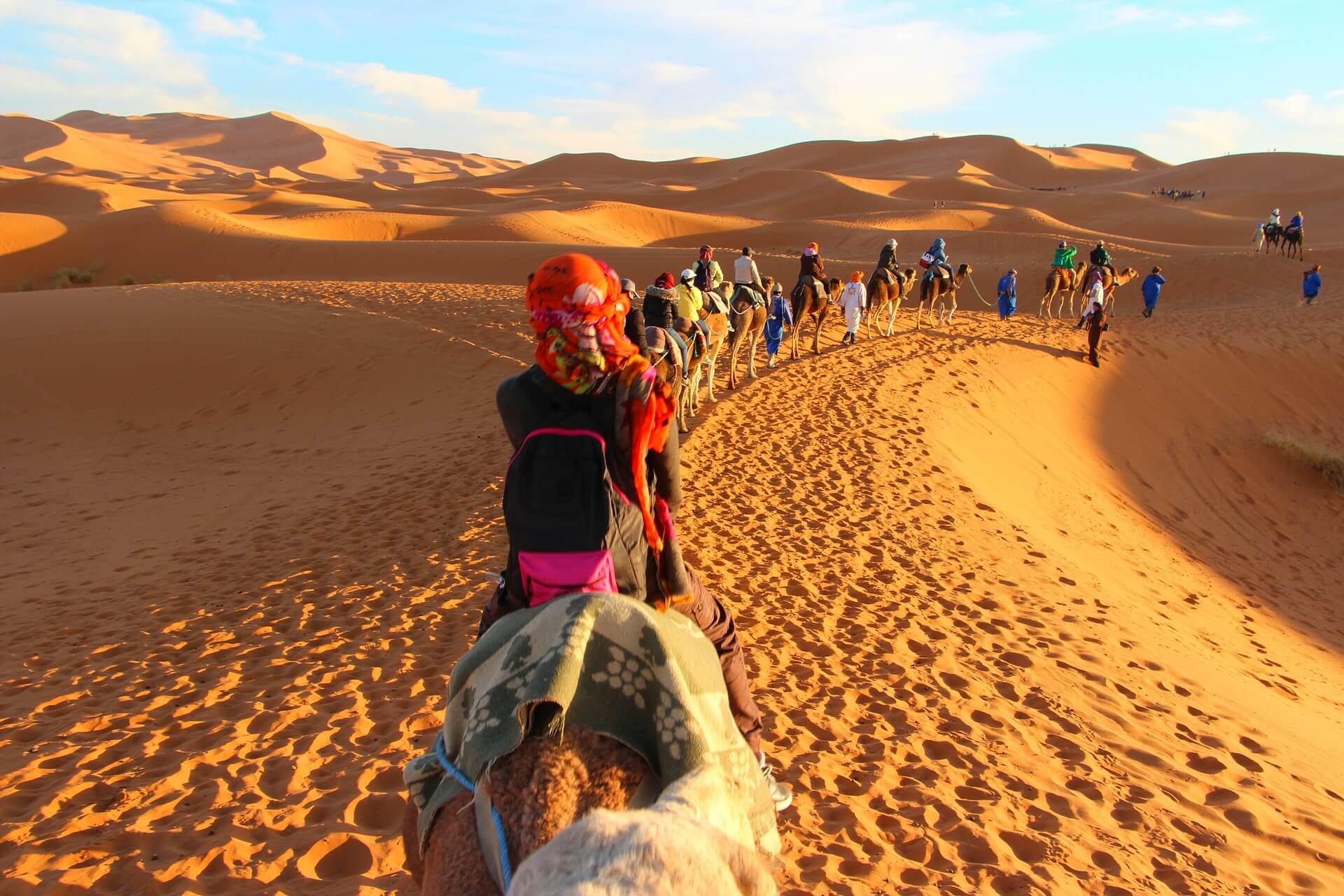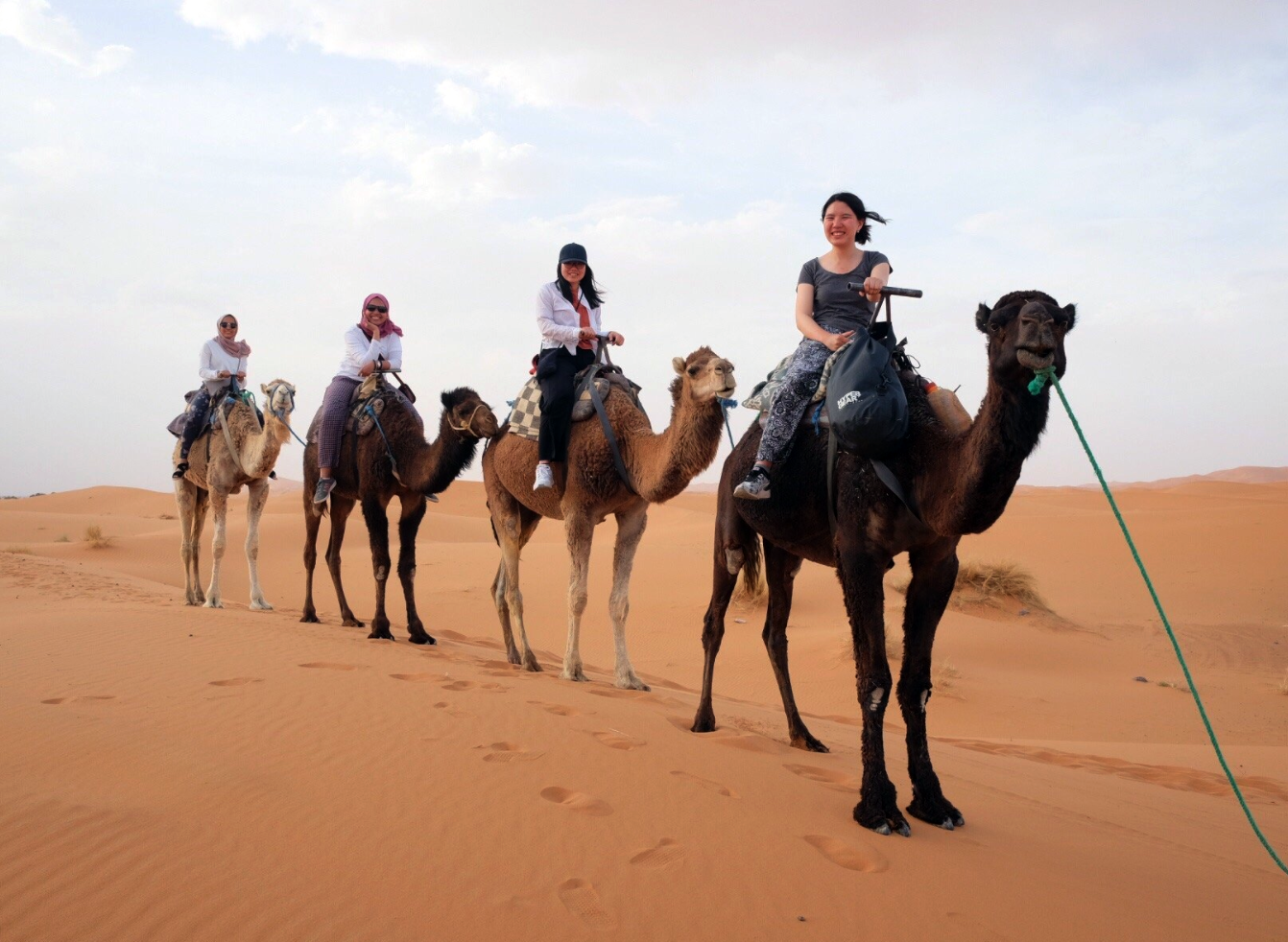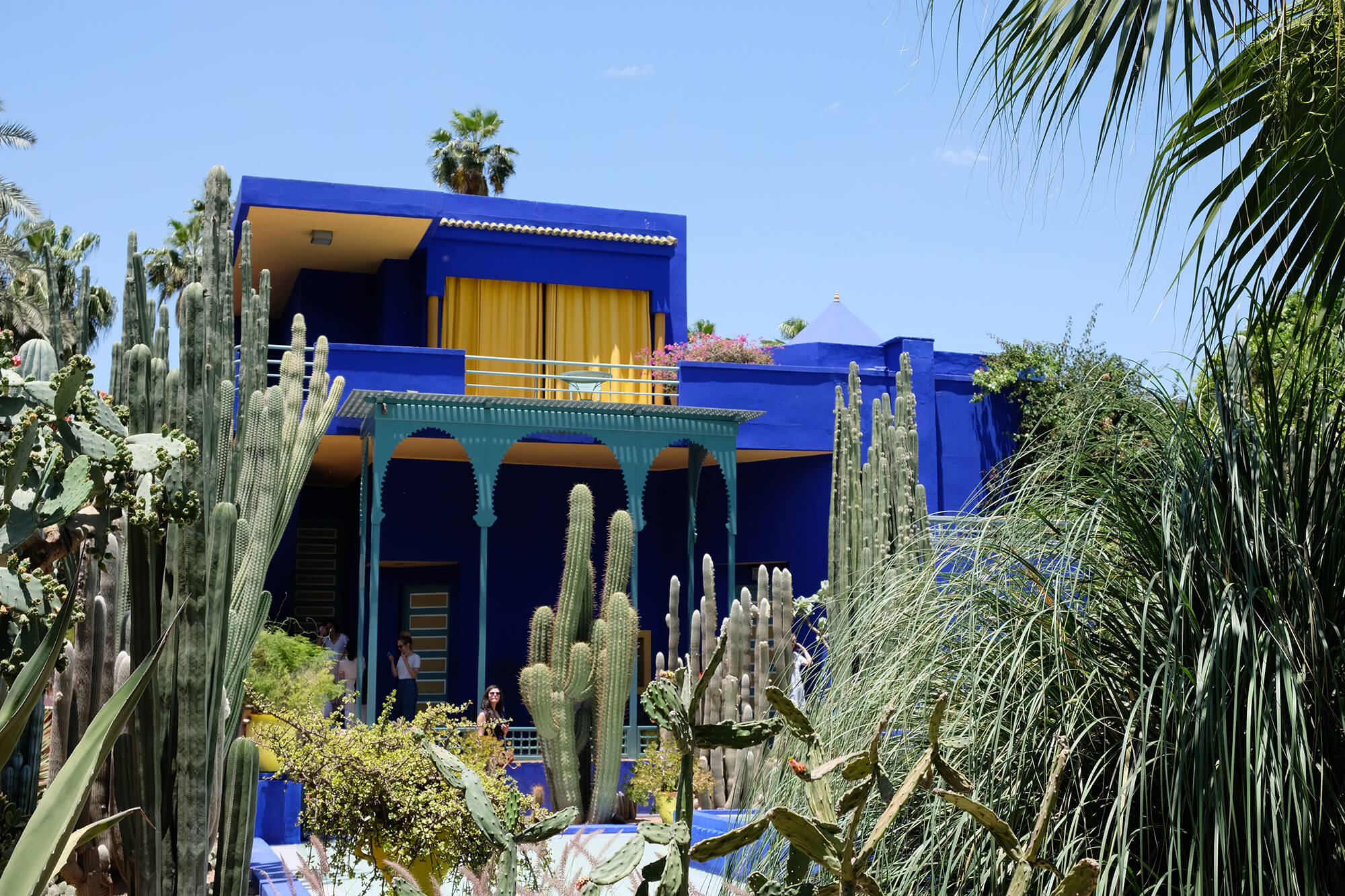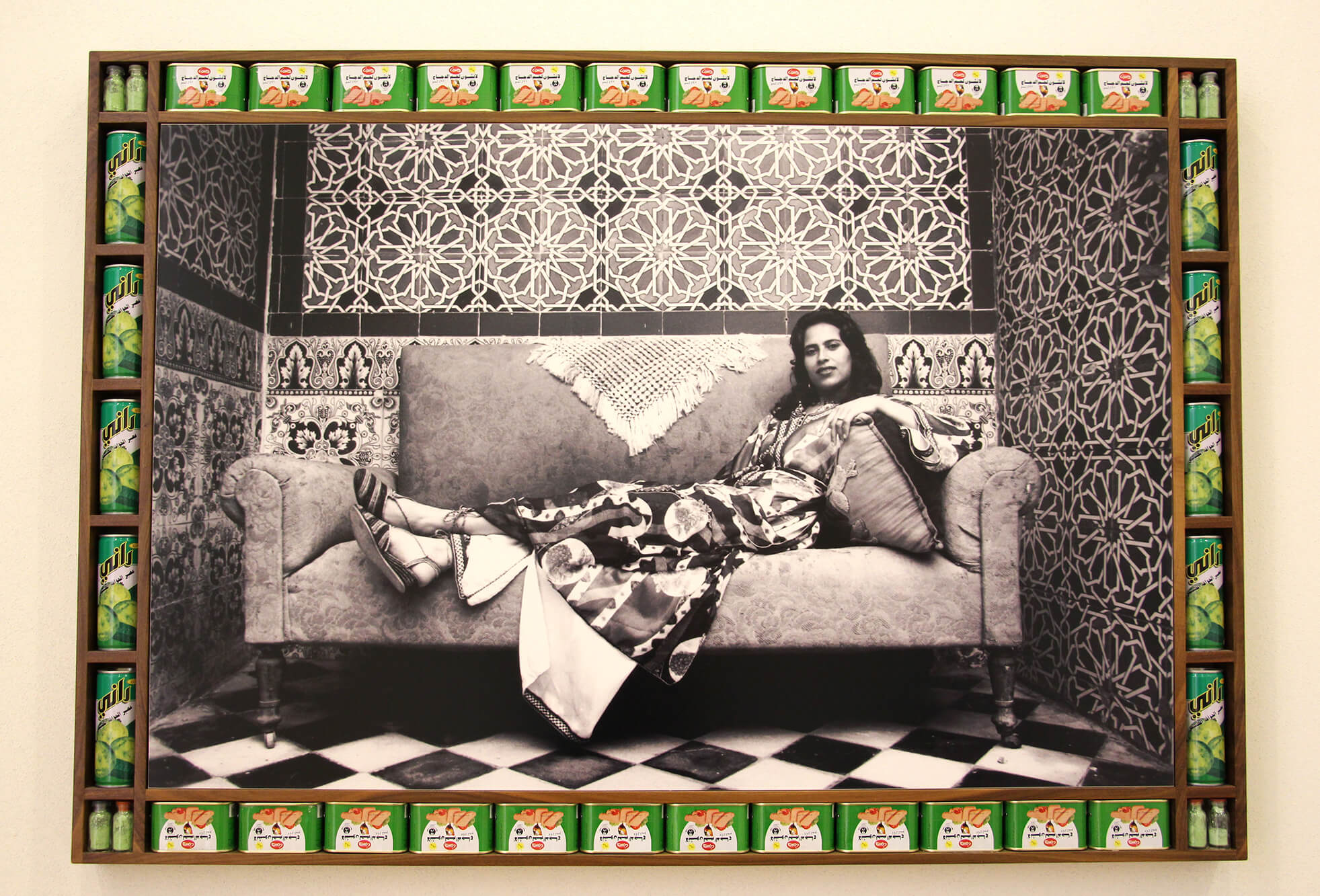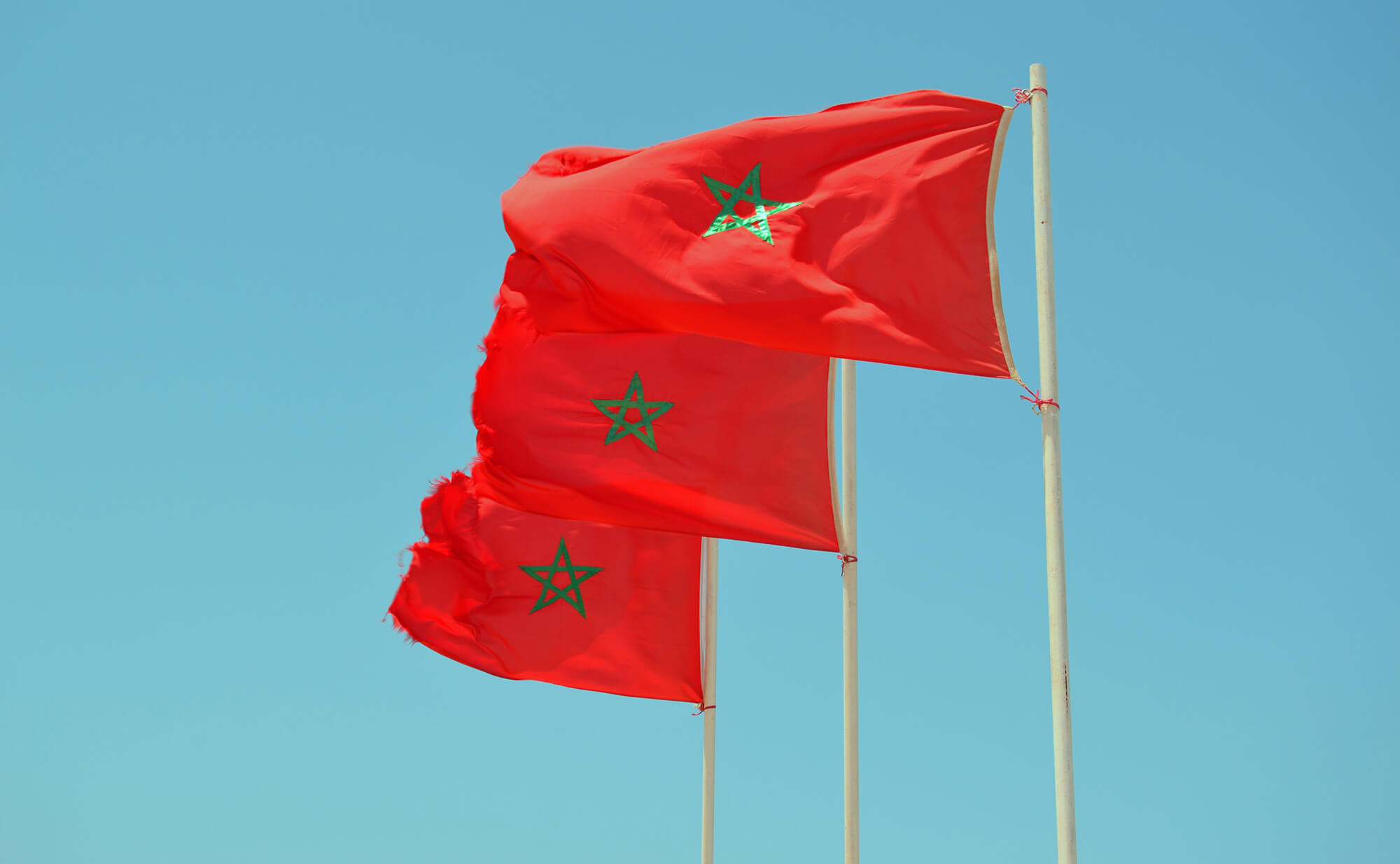Explore Morocco’s majestic natural beauty from lush forests to massive mountain peaks, there’s so much to discover. Here’s our top trekking picks to get your adventure started off on the right foot.
Morocco’s landscapes change dramatically from region to region. One day you’re tracing turquoise rivers beneath forests and limestone walls; the next you’re threading canyons, stepping past crystalline waterfalls, or cresting valleys encircled by snow-dusted peaks. You can hike all the way to the Atlantic or climb into the quiet of the High Atlas. However you go, hiking and trekking around Morocco will leave you with the kind of memories that tug you back.
Discover the southern, arid horizons near the deserts of Morocco and pair your route with an overnight Sahara Desert trek. Wander off the beaten path into remote Amazigh/Berber villages and get a feel for the living culture of Morocco. You could spend months exploring before you ever set foot in a city—so here’s where to start.
Rif Mountains – Northwest Trails with Sea Views
This mountain range extends from Tangier in the North to the Moroccan/Algerian border. Remote and rugged, these mountains were once the perfect hideout for the indigenous Amazigh/Berber tribes and the Andalusian Muslim emigrants from Spain to escape from foreign invaders. Today, the Rif Mountains continue to be home to the Moroccan fir tree that is under threat from extinction.
From Chefchaouen, day hikes slip easily into Talassemtane National Park: stroll to the famed Akchour cascades and God’s Bridge, or push higher for views of Jbel Tidirhine, the range’s lofty summit.
Trails are quieter than in the Atlas, the air smells of wild herbs, and you’re rarely far from a blue-washed village café when you’re ready for mint tea.
The Rif Mountains remain under-traveled — one reason they feel so rewarding.
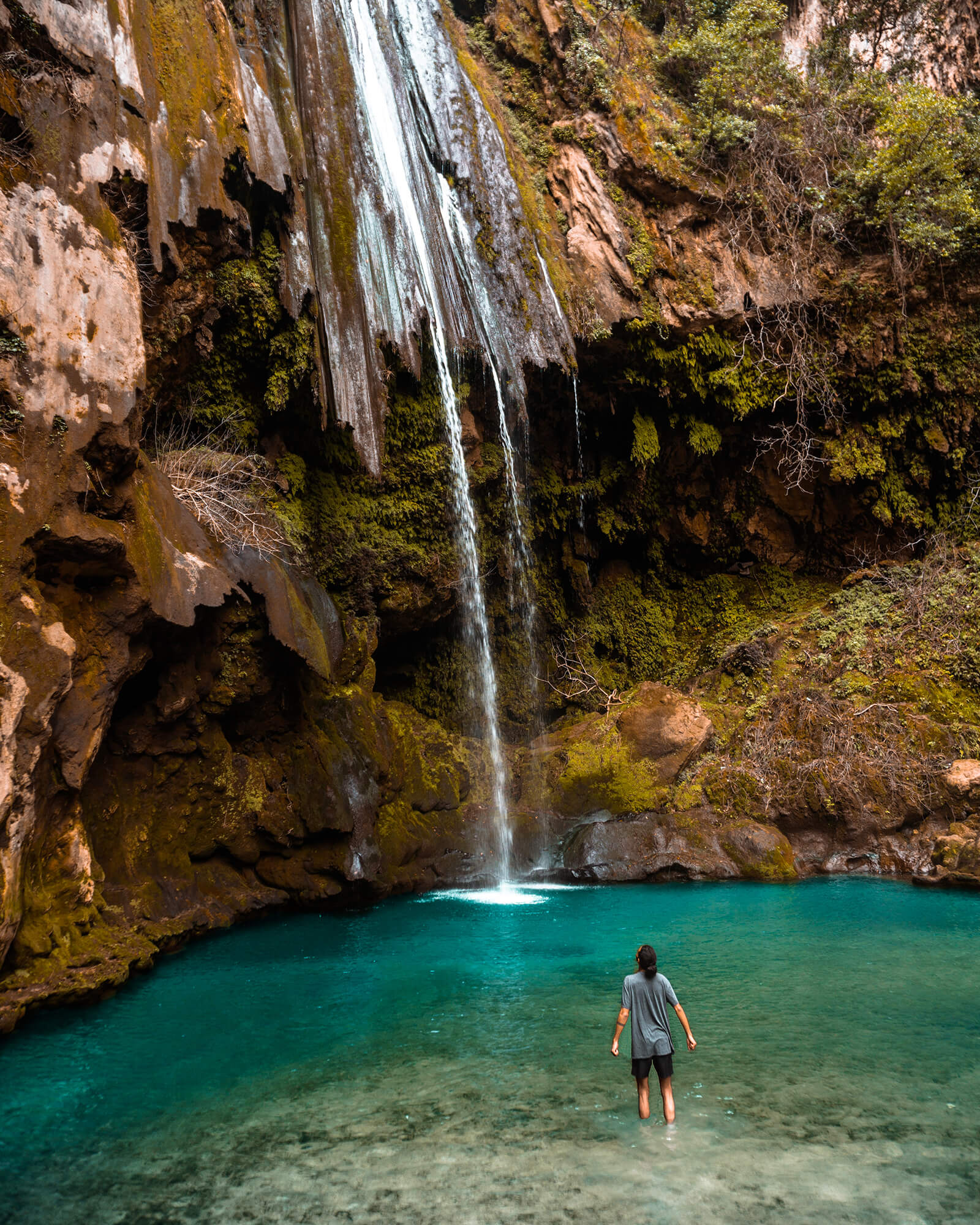
High Atlas – Big Peaks, Big Country
The High Atlas range is a primarily forested region full of gorges, valleys, and canyons. Here is where North Africa’s highest peak, Jebel Toubkal rises to 4167 meters high. If you’re up for a strenuous, trekking challenge, this is the place for you.
Trekking the Toubkal Circuit at Toubkal National Park is no easy feat, but definitely, a rewarding experience that is unforgettable. This expedition should only be attempted by trekkers with extensive experience and a guide is recommended for your safety.
You can also trek through the spectacular and diverse terrain of the Dades Valley. Choose from day-long treks or multi-day excursions through lush, date palm grove oases and pass through Amazigh/Berber villages, wander through red rock gorges that contract and expand going from narrow to wide as you explore along the Draa River that takes you near the edge of the Sahara. This valley is often referred to as the “Valley of a Thousand Kasbahs” since there once were several along this ancient caravan route, but now only ruins remain.
Explore a little south of the High Atlas Mountains and you will discover the fascinating Ounila Valley. Trek through caves in the sandstone facades of cliffs or marvel at the strange and surreal beauty of the famous “Monkey Fingers“, bizarre, eroded sandstone rock formations reminiscent of a terrestrial landscape.
A trek through the lush and majestic valley of Ait Bouguemez will leave you awestruck. The trails here are mostly flat so it’s fairly easy for pleasant hikes that don’t distract from the breathtaking scenery. Wander past fields of walnut, apple, and juniper trees as you pass through authentic Amazigh/Berber villages with mud-brick houses where you’ll likely see farmers tending to their fields. This tranquil valley is an unspoiled treasure that is sure to leave you with a unique experience to remember.
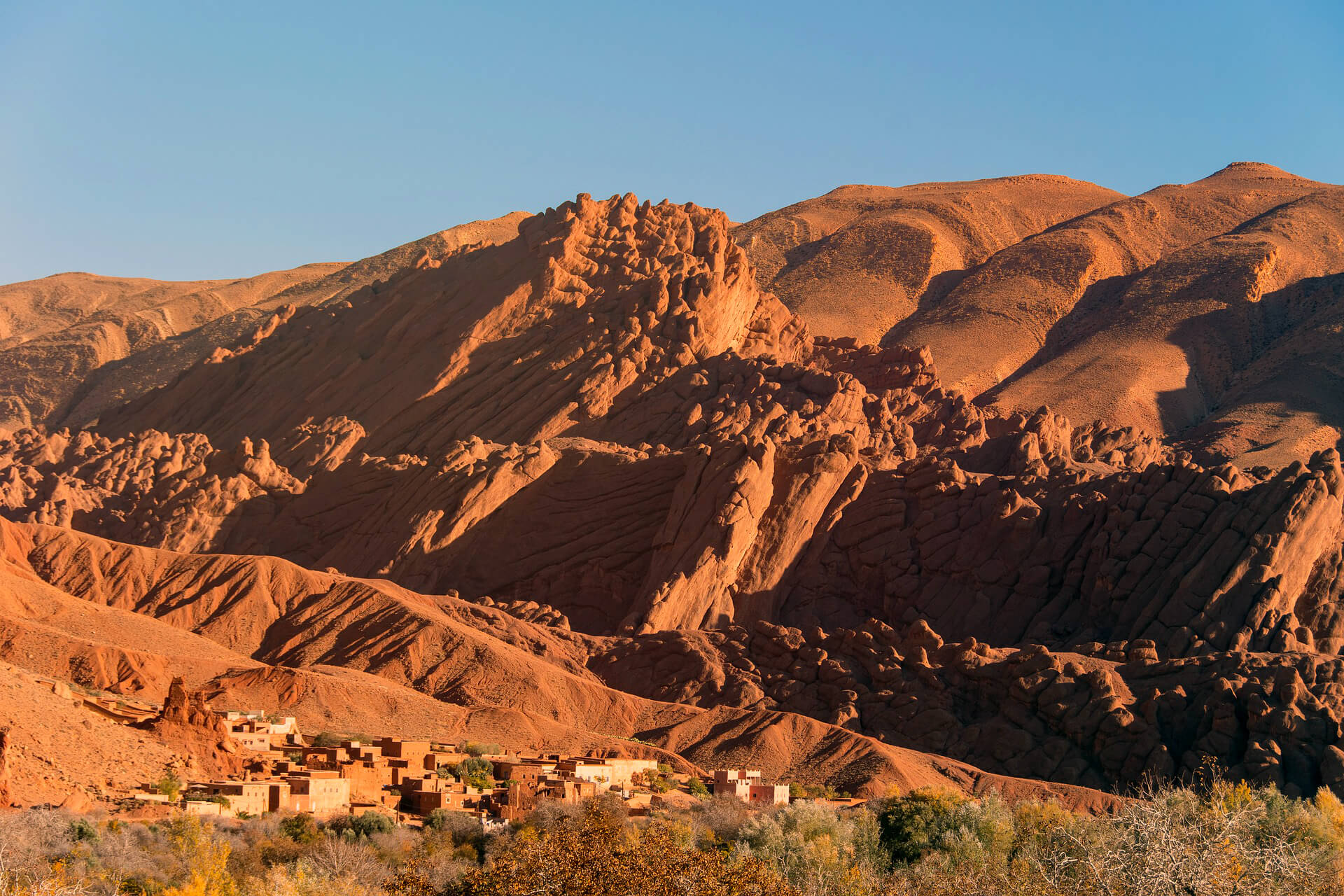
Middle Atlas – Cedar Forests, Lakes, and Waterfalls
Located in central Morocco, between Fez and Marrakech, the Middle Atlas is full of amazing trekking adventures that await you. The highest peak is Jbel Bou Naceur at 3340 meters high. You can trek through winding canyons and hike through the stunning cedar forests where you just might be lucky enough to spot an endangered Barbary macaque (primate). Cool off after a long day’s trek in one of many lakes found in this region.
Experience and explore the magic of the Ouzoud Waterfalls or discover ancient fossils from the Mesozoic Age at M’Goun UNESCO Global Geopark. This park spans an impressive 5,700 km and includes 15 municipalities. Hiking around this fascinating, archaeological territory, you’re likely to see dinosaur footprints and endangered species that inhabit the area.
Ifrane National Park is a must for nature lovers and there are several trails to explore depending on your preference level. This picturesque landscape is full of oak, cedar, and juniper trees and home to many animal species including foxes, jackals, Barbary macaques, and squirrels, just to name a few. There are many places you can stop along the way for a picnic or a swim in one of the many lakes.
The Panorama Trail is spectacular and you can marvel at the snow-capped peaks of Jbel Tichoukt and Jbel Boublane in the distance. Winter is a fantastic time to venture through here as the snow transforms the forest into a glistening wonderland.
Another great place to go hiking around is Tazekka National Park with its treasure troves of caves, canyons, forests, and cascades.
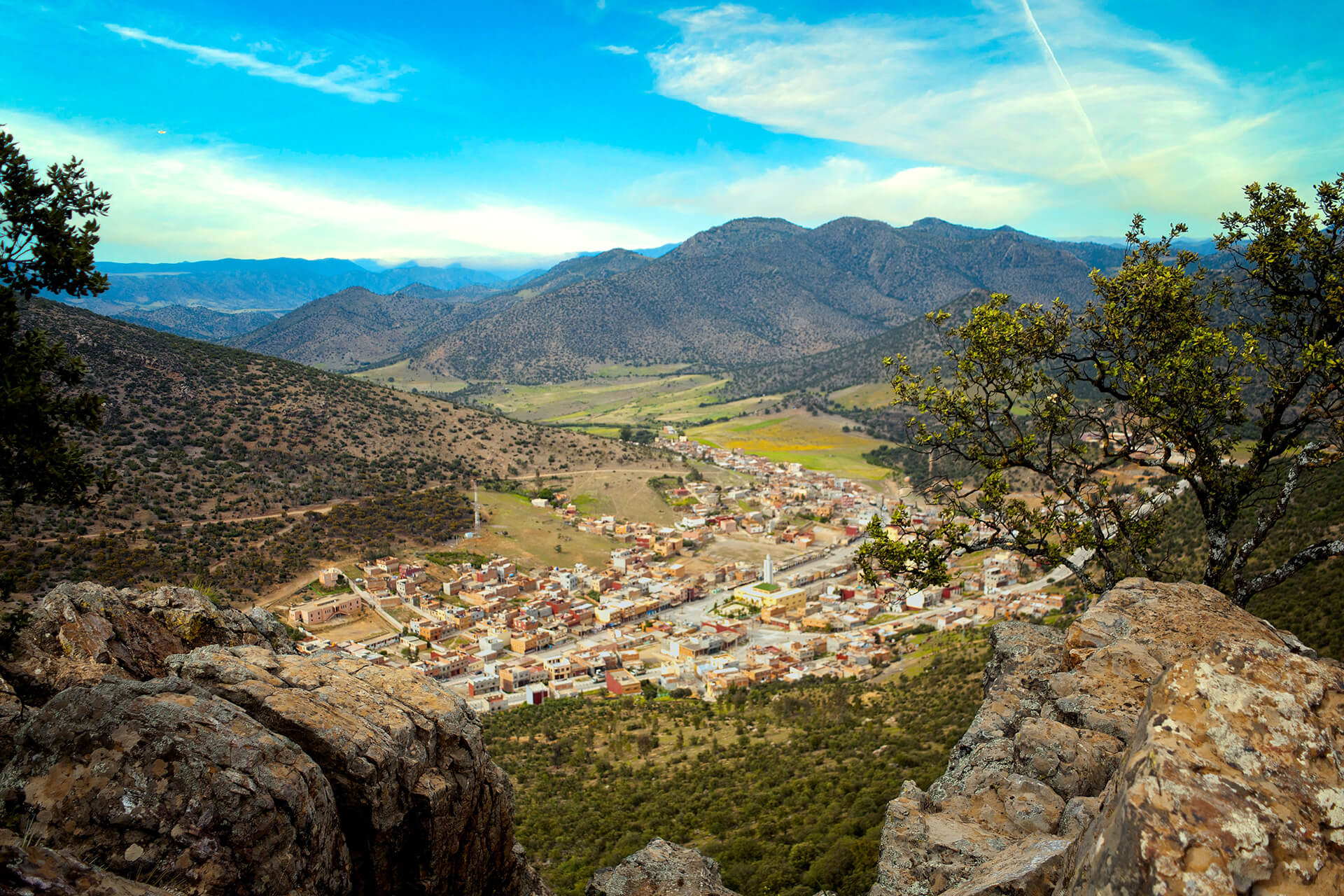
Anti-Atlas – Quiet Ridges and Painted Rocks
If solitude is your priority, follow the Anti-Atlas. The range runs toward the Atlantic and edges the Sahara, swapping pine forests for pink-and-ochre granite, terraced valleys, and improbable Argan Trees (often with goats perched among the branches).

Anti-Atlas is a great place to explore after your camel tour or Sahara Desert trip. There are plenty of incredible places to hike around the area that surrounds Jebel el Kest (Afa-n-Tmezgadiwine) is east of the Atlas that rises 2359 m/ 7740 ft.
Adrar Mkorn is another peak to trek at 2344m and has twin peaks and it’s quite a workout to get there.
Hiking through the popular and picturesque Paradise Valley located near Agadir offers plenty of opportunities to cool off and swim in natural pools that you’ll find along the way.
Jbel Saghro is definitely the driest area and you’ll discover a variety of trails that lead to remote, Amazigh/Berber villages. Other trails lead to caves with cave paintings.
Wander through the Ameln Valley with its lush, green pastures where goats graze and wild boars roam in this charming landscape. You can leisurely stroll from village to village (there are over 25 so it could become quite a long hike) passing by almond orchards and palm oases.
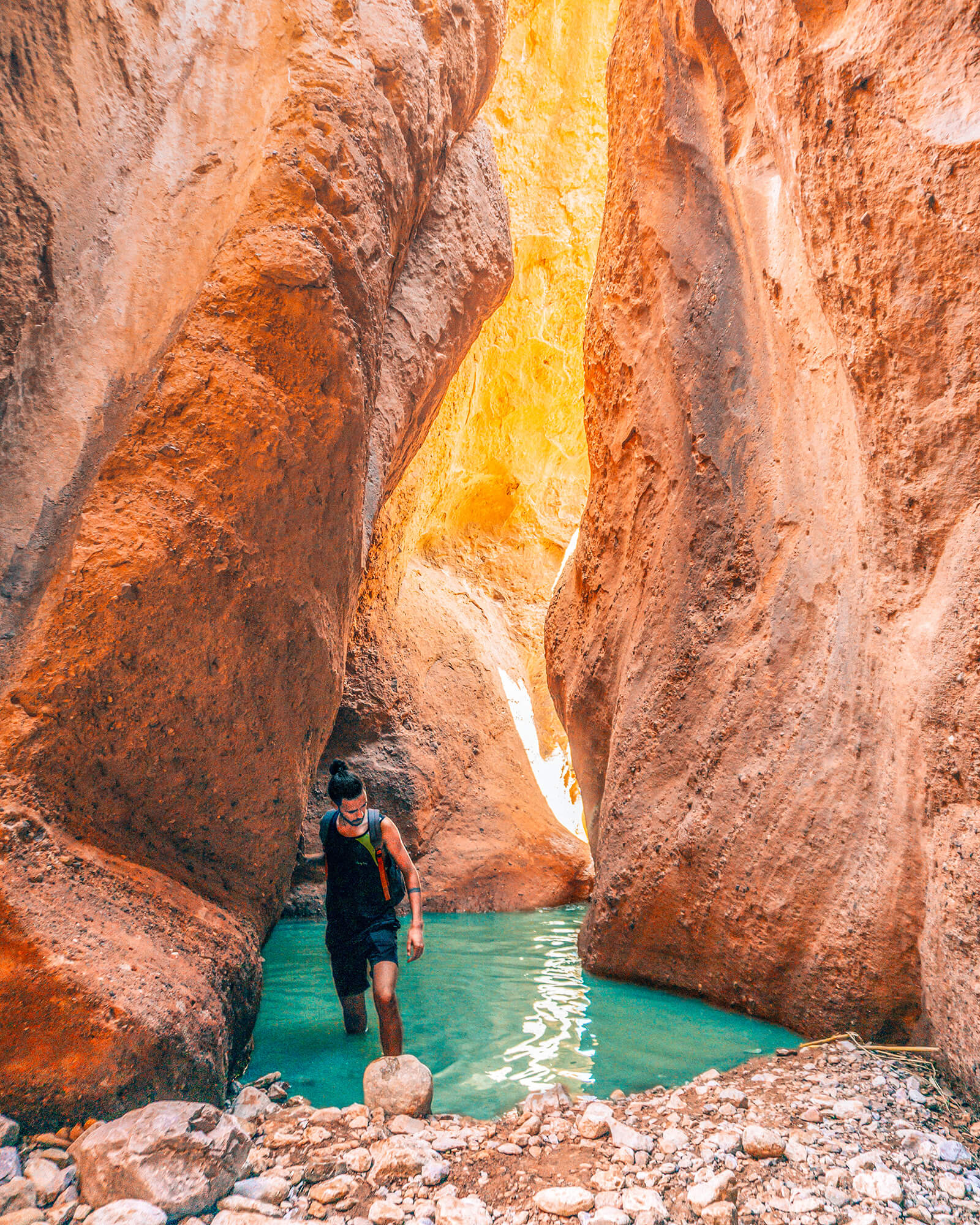
When Trekking Meets the Desert
Many hikers cap their route with a night in the dunes. From the High Atlas, it’s straightforward to connect to Merzouga and Erg Chebbi or to the wilder Erg Chigaga near Zagora. Swap boots for a camel saddle at sunset, sleep under an explosion of stars, and greet the morning with a ridge-top sunrise before rolling on to your next trail.
There is no limit to Morocco’s amazing geography and there is so much that is yet to be discovered. All-year-round outdoor hikes and trekking are possible, so let the adventures begin!
Practical Tips
Pack layers year-round—mornings are crisp even in summer at altitude. In villages, dress modestly out of respect; always ask before photographing people. Carry cash for small guesthouses, and hire local, certified guides for summit attempts or remote circuits. If you’re short on time, browse our Morocco tour packages and we’ll stitch hikes into your itinerary.
🧭 FAQs
Q1: When is the best time to hike in Morocco?
Spring (March–May) and autumn (September–November) bring mild temps and clear views. Summer is great for high elevations; winter can be fantastic for low-level walks and waterfalls but expect snow and ice in the High Atlas.
Q2: Do I need a guide for Jebel Toubkal?
Strong hikers sometimes do it unguided in summer, but a certified local guide is recommended for safety, route-finding, and weather—essential in winter.
Q3: Are there easy day hikes near Chefchaouen?
Yes. The Akchour waterfalls and God’s Bridge make a beautiful half- or full-day outing with moderate elevation and plenty of places to rest.
Q4: Can I combine trekking with a Sahara experience?
Absolutely. Many travelers hike in the Atlas, then continue east for a one- or two-night Merzouga camel trek before looping back via Ouarzazate or Marrakech.
Q5: What should I pack?
Light layers, a sun hat, reusable water bottle, electrolytes, broken-in hiking shoes, modest town clothes, headlamp, and basic first aid. In winter: a warm jacket, gloves, and beanie.
Q6: Do I need permits or pay entry fees to hike in Morocco?
Most day hikes don’t require permits. Some protected areas and waterfalls may charge small local entry or parking fees, and staffed mountain refuges charge per-night rates. In the Toubkal area you’ll pass ID checkpoints—carry your passport and register details with local authorities when asked.
Q7: How do I reach trailheads from Marrakech or Fez without a car?
For popular starts like Imlil (Toubkal), shared grands taxis and minibuses run daily from Marrakech (via Asni). For Chefchaouen/Rif routes, buses connect from Fez or Tangier, with local taxis onward to trailheads such as Akchour. Private transfers are easiest if you’re short on time or carrying bulky gear.
Q8: Where do hikers sleep on multi-day treks?
Expect a mix of staffed mountain refuges (bunk rooms, simple meals), village guesthouses/gîtes with hot meals and basic rooms, and tent camping on remote circuits. Many trekkers hire a local guide who can arrange lodging, meals, mules/porters, and safe water along the route.
—
Editor’s Note: This post was originally published in 2020 and updated in November 2025 for accuracy and freshness.
